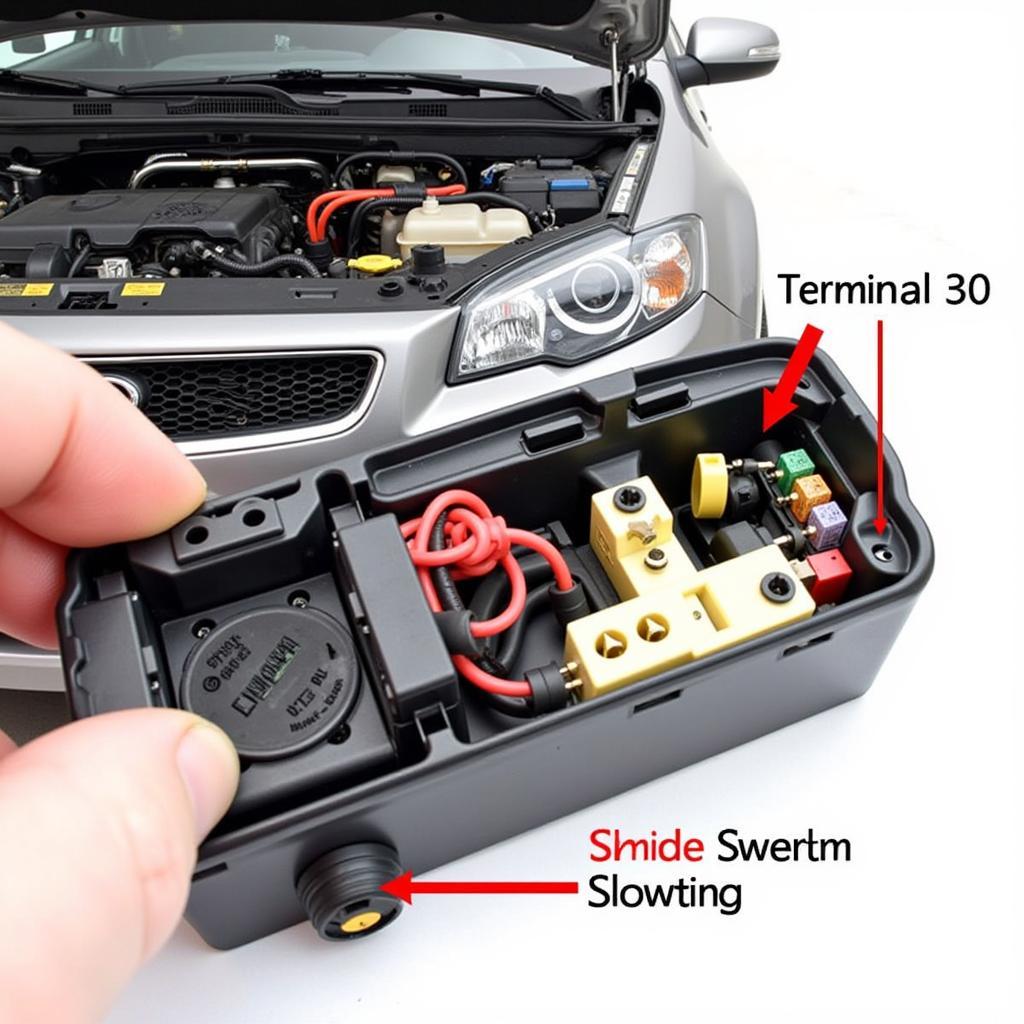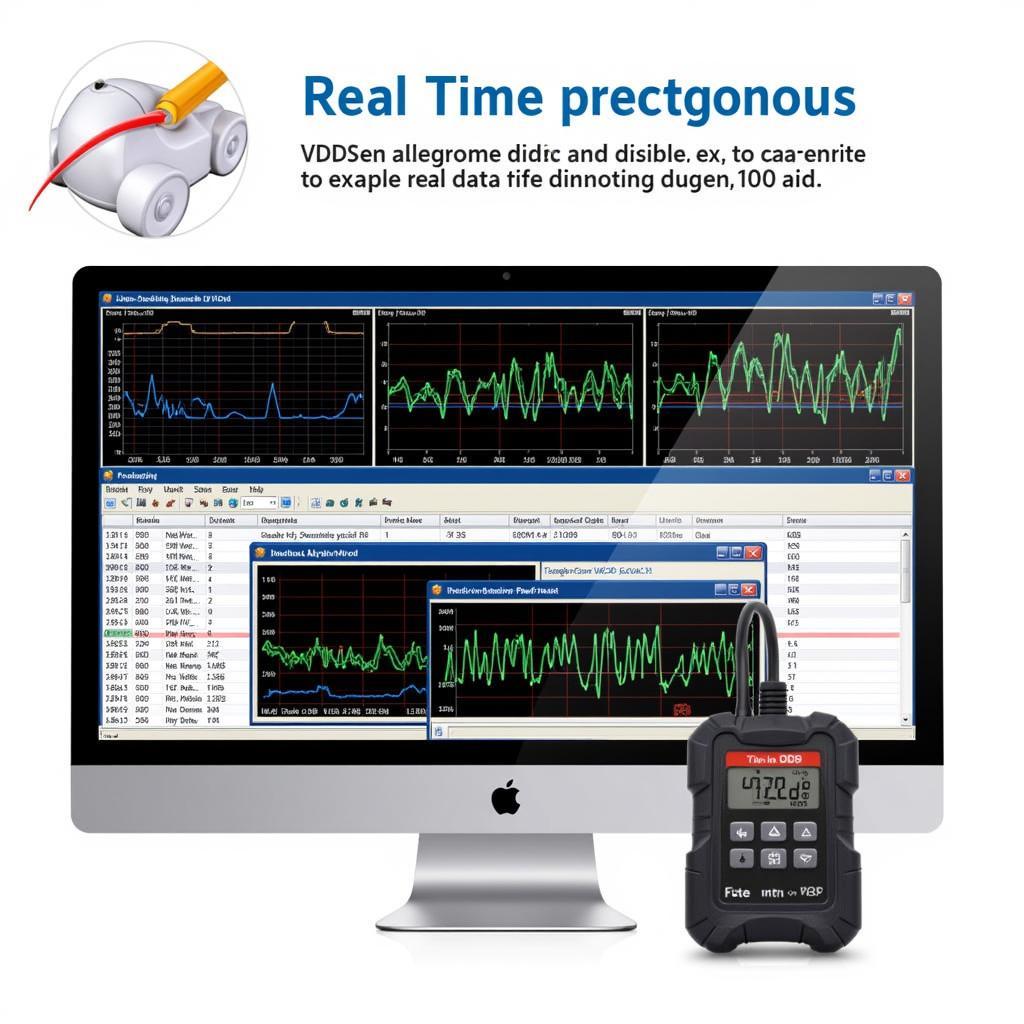The 01826 VCDS trouble code is a common issue that can plague Volkswagen, Audi, Seat, and Skoda vehicles. This article dives deep into understanding the 01826 code, its causes, symptoms, diagnostic procedures, and solutions, empowering car owners and technicians alike to tackle this problem head-on. We’ll explore how VCDS, a powerful diagnostic tool, can be instrumental in identifying and resolving this issue effectively.
Decoding the 01826 VCDS Code: What Does it Mean?
The 01826 fault code within the VCDS (Vag-Com Diagnostic System) typically indicates a problem with the “Supply Voltage Terminal 30”. This terminal is a crucial power source for many electronic control units (ECUs) in your vehicle. A malfunction here can lead to a range of drivability issues, from intermittent electrical problems to complete system failures. Ignoring this code can result in further complications and potentially costly repairs down the road. Understanding what the 01826 code means is the first step towards a successful repair.
 VCDS Terminal 30 Location Diagram
VCDS Terminal 30 Location Diagram
Common Causes of the 01826 VCDS Error
Several factors can trigger the 01826 error code. These include a faulty alternator, a weak or dying battery, loose or corroded wiring connections at Terminal 30, a faulty ignition switch, or even a blown fuse related to the power supply circuit. Identifying the root cause requires a systematic diagnostic approach, and VCDS plays a vital role in this process.
Using VCDS for Diagnosis and Troubleshooting
VCDS allows you to access and interpret the diagnostic trouble codes (DTCs) stored in your car’s ECUs. With the 01826 code identified, you can then use VCDS to perform further tests, such as checking the battery voltage, monitoring the alternator output, and examining the wiring for continuity and resistance. 01826 vcds supply voltage terminal 30 offers a more in-depth look at this specific issue.
Symptoms Associated with the 01826 Fault Code
The symptoms associated with the 01826 VCDS error can vary depending on the underlying cause and the affected systems. Some common signs include:
- Intermittent starting problems
- Electrical system malfunctions (e.g., lights flickering, radio cutting out)
- Dashboard warning lights illuminating
- Stalling or rough engine idle
- Complete loss of power
How to Fix the 01826 Error: A Step-by-Step Guide
- Check the battery: Use a multimeter to verify the battery voltage. vcds battery voltage provides useful information on how to check this using VCDS. A low voltage indicates a weak or failing battery.
- Inspect the alternator: Check the alternator’s output voltage using VCDS. A faulty alternator will fail to provide sufficient charging voltage.
- Examine Terminal 30: Carefully inspect the wiring and connections at Terminal 30 for any signs of looseness, corrosion, or damage.
- Check related fuses: Identify and inspect the fuses associated with the Terminal 30 power supply circuit.
“Regularly checking your battery voltage using VCDS can help prevent unexpected issues and maintain optimal vehicle performance,” advises John Miller, a certified automotive diagnostician with over 20 years of experience.
Conclusion: Taking Control of the 01826 VCDS Issue
Understanding and addressing the 01826 VCDS trouble code is crucial for maintaining the reliability and performance of your vehicle. By using VCDS alongside a systematic diagnostic approach, you can effectively pinpoint the root cause and implement the necessary repairs. Don’t let the 01826 code take you by surprise; take proactive steps to ensure your vehicle stays in top condition. You can find additional VCDS resources and guides on vcds long coding guides.
“Addressing the 01826 error promptly can prevent further complications and save you from expensive repairs in the long run,” emphasizes Sarah Johnson, an electrical systems specialist with extensive experience in European car diagnostics. She also recommends exploring further VCDS functionalities through resources like vcds diag. For those looking to delve into more advanced VCDS techniques, vcds hacks can be a valuable resource.
Need help with your car diagnostics? Contact us via Whatsapp: +1 (641) 206-8880, Email: [email protected] or visit us at 276 Reock St, City of Orange, NJ 07050, United States. We have a 24/7 customer support team ready to assist you.


